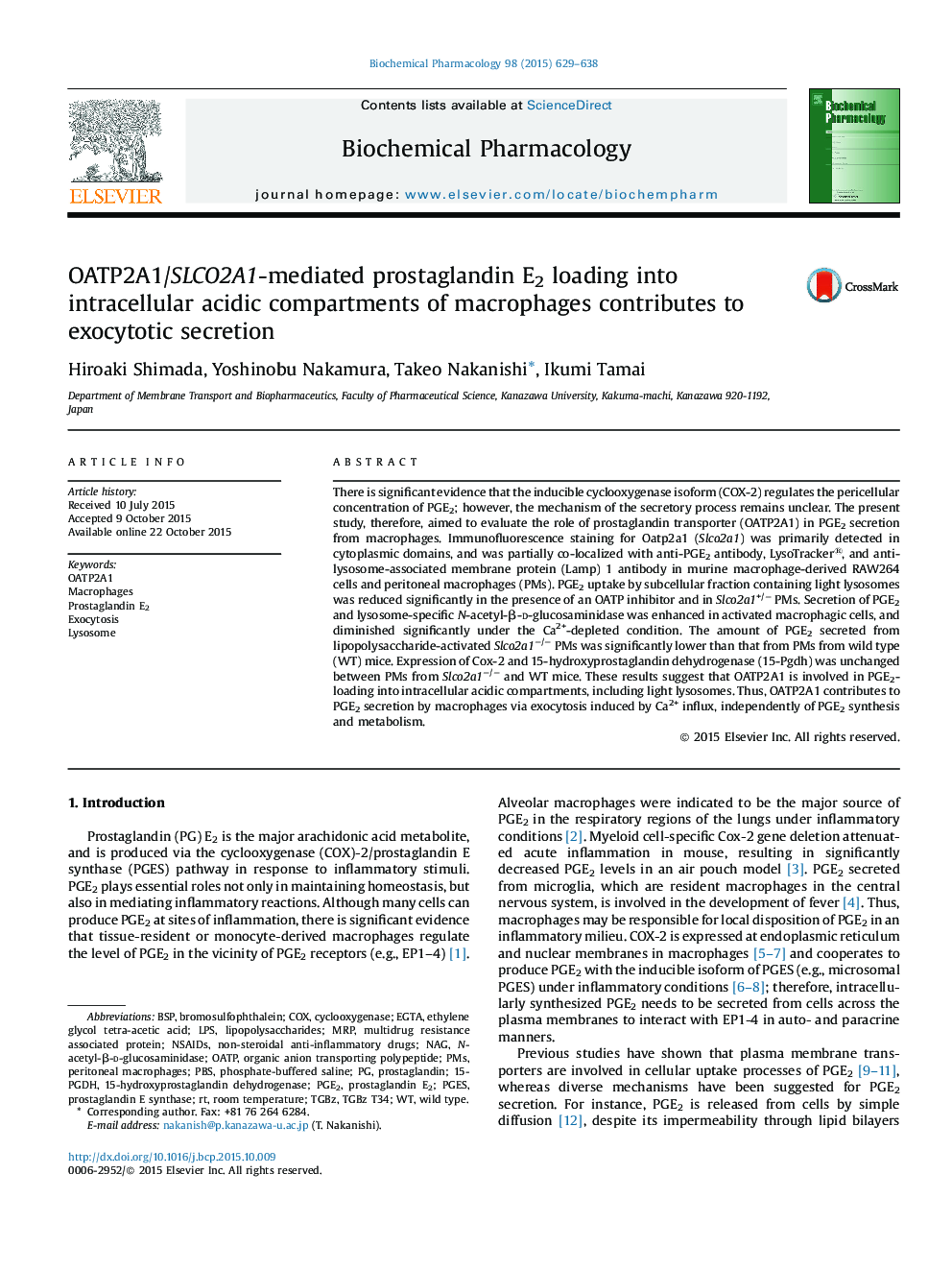| Article ID | Journal | Published Year | Pages | File Type |
|---|---|---|---|---|
| 5823238 | Biochemical Pharmacology | 2015 | 10 Pages |
There is significant evidence that the inducible cyclooxygenase isoform (COX-2) regulates the pericellular concentration of PGE2; however, the mechanism of the secretory process remains unclear. The present study, therefore, aimed to evaluate the role of prostaglandin transporter (OATP2A1) in PGE2 secretion from macrophages. Immunofluorescence staining for Oatp2a1 (Slco2a1) was primarily detected in cytoplasmic domains, and was partially co-localized with anti-PGE2 antibody, LysoTracker®, and anti-lysosome-associated membrane protein (Lamp) 1 antibody in murine macrophage-derived RAW264 cells and peritoneal macrophages (PMs). PGE2 uptake by subcellular fraction containing light lysosomes was reduced significantly in the presence of an OATP inhibitor and in Slco2a1+/â PMs. Secretion of PGE2 and lysosome-specific N-acetyl-β-d-glucosaminidase was enhanced in activated macrophagic cells, and diminished significantly under the Ca2+-depleted condition. The amount of PGE2 secreted from lipopolysaccharide-activated Slco2a1â/â PMs was significantly lower than that from PMs from wild type (WT) mice. Expression of Cox-2 and 15-hydroxyprostaglandin dehydrogenase (15-Pgdh) was unchanged between PMs from Slco2a1â/â and WT mice. These results suggest that OATP2A1 is involved in PGE2-loading into intracellular acidic compartments, including light lysosomes. Thus, OATP2A1 contributes to PGE2 secretion by macrophages via exocytosis induced by Ca2+ influx, independently of PGE2 synthesis and metabolism.
Graphical abstractDownload full-size image
